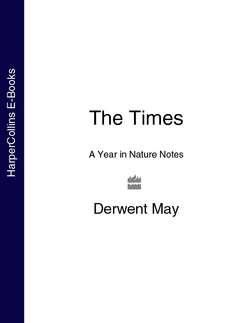Читать книгу The Times A Year in Nature Notes - Derwent May - Страница 71
5th March
ОглавлениеA CURIOUS GOOSE that is found mainly on lakes in Norfolk but often turns up by other waters is the Egyptian goose. It is a fat, buff-coloured bird that looks as if it has just received a painful black eye, and it also has a disconcertingly long neck. It is an early nester, and some pairs already have a nest with eggs under a bush, or in a large hole in a bank. Not many of the broods are successful. It is really an African bird, widespread on that continent, and some were brought here from South Africa as long ago as the 18th century.
Conspicuous at the edges of lakes just now are the disintegrating heads of the bulrushes – known to botanists as great reedmace, and also sometimes called cat’s-tail. The brown sausage-shaped heads are breaking up into fluffy white seeds, and look very ragged as the wind tears at them and carries the seeds away. Where the heads are still firm, male reed buntings are sitting on them and singing. Their song is a monotonous repetition of a few dry notes, but they are handsome birds, with a black head, a white collar and a back like rich orange-brown tapestry.
